Spider-Man may be the last character that comes to mind when it comes to bleak comics. Spidey, on the other hand, has occasionally proved himself to be a gloomy guy. Marvel’s Stan Lee and Steve Ditko presented Spider-Man to the world in Amazing Fantasy #15, which was first published in 1962.
Before Ditko left, the two would produce 38 editions of the Wall-escapades crawler over the next three years. However, the seeds of Spider-Man becoming the world’s most popular superhero had already been planted, and under the cautious supervision of Lee and Co., he soon rose to prominence. Fans of long-running character series, on the other hand, are well aware that their favorite narratives have plenty of dark moments.
The weight of being a superhero has caught up with Peter and Spidey on countless occasions throughout the years. Throughout his career in comic books, the web-slinger has been afflicted by dark events, from emotional outbursts to the deaths of people closest to him. Today, we will look at the 9 most violent and mature story arcs in which our friendly neighborhood Spiderman has appeared.
Kraven’s Last Hunt

The first dark and violent moment that we will discuss is Kraven’s Last Hunt. Kraven established himself as a formidable and popular villain throughout his time- lining the pages of Spider-comics. Man’s Kraven, one of Spider-most Man’s fearsome opponents, used his talents as a huntsman, tremendous physical strength, and potions to knock Spidey on his back on multiple occasions.
And his demise in Kraven’s Last Hunt was a fittingly dark conclusion for such a complex and frankly frightening character. The plot begins with Kraven luring Spider-Man out of his hiding place, injecting him with a tranquilizer, and burying him alive. He then embarks on a vigilante rampage costumed as a superhero against the city’s villains, even managing to wipe out Vermin in the process. Spider-Man finally recovers and pursues Kraven, who surrenders with no fanfare, declaring that he has already made his point and demonstrated his strength to everyone.
The Huntsman then sets Vermin free and returns home triumphant, finding his final moments of serenity before drawing a gun and shooting himself in the head. While this story dabbles in vigilantism and involves a man who shoots himself, the actual horror lies in Kraven’s brutality toward anybody who crosses his way, be it a regular criminal or our favorite wall-crawling superhero. The violence is quite heavy in this one with absolutely no mercy for anyone that dares to defy or oppose Kraven This one definitely is enough to make readers’ skin crawl.
Back In Black
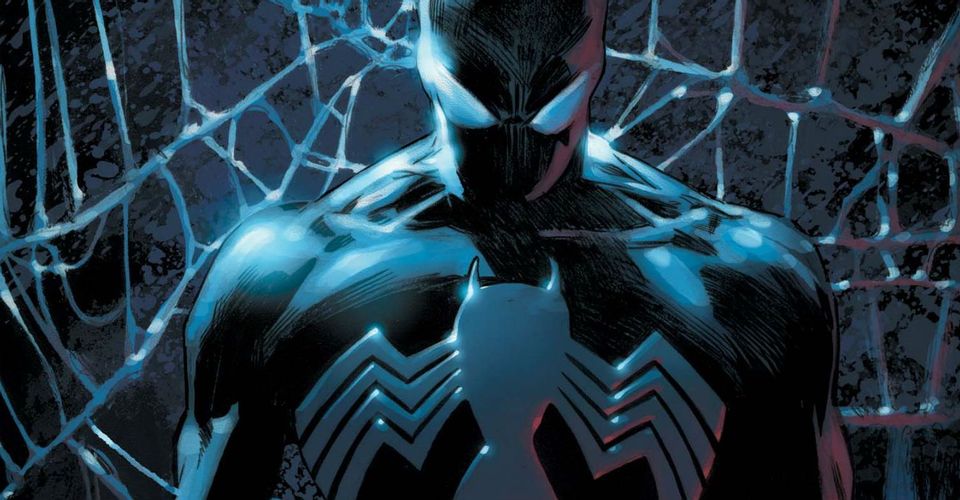
Back in Black, 2007 comic, delves into the darker side of the Webhead. The comic is a superb character study of Spider-Man, demonstrating how his morality may be tested to the limit when he is pushed to his limits. This book is essential reading for any Spider-Man fan, not just for the re-introduction of the symbiote Spider-Man, but also for the character analysis of Spider-Man.
The comic depicts Aunt May being shot by an unknown assassin early in the plot, sending Spider-Man into a downward spiral. The attempted assassination of Aunt May, as well as the character’s subsequent illness, pushes Spider-Man down a violent path, with the Webhead’s morals and ideals being called into question as he seeks justice. The black suit is one of Spider-most Man’s popular outfits, and this comic depicts it in all its grandeur.
While the symbiote Spider-Man is bad for the Webhead’s mental and physical health, it has a positive effect on Spider-thinking, Man’s as this Spider-Man narrative is significantly grittier than others, following Spider-Man as he investigates Aunt May’s assassination.
Spider-Man’s power is increased by wearing the black costume but at a cost. It brings out the ugliness in his own personality. While this is horrible enough at any moment, Spider-inner Man’s darkness has already been heightened as a result of the attack on Aunt May. Spider-Man is very ruthless in this tale as a result of his innate rage and the black costume.
Almost killing numerous adversaries and torturing one of his most iconic villains in the process, as well as meeting up with well-known villain The Kingpin, adds to the darkness. In order to figure out who was behind his Aunt’s death, Spider-Man breaks certain very specific regulations in this chapter. During the comic series, Spider-Man would perform less violent acts of crime, such as fraud, in addition to torture and terrible brutality.
Throughout the plot arc, Spider-Man commits a total of nine felonies. The plot also takes place after the Civil War. The protagonists in this story are still feeling the effects of the Civil War story arc, indicating that Spider-mental Man’s state was already weak at the start. Lastly, one of Spider-distinguishing Man’s characteristics is his anonymity.
Because the mask is typically the last line of defense for individuals close to Spider-Man, when Aunt May is attacked, Spider-Man is unconcerned about the mask. This demonstrates how rash Spider-Man has become, as he no longer wears his mask when battling and tracking some of the Marvel Universe’s most deadly criminals, making this one of the darkest arcs.
The Death of Jean DeWolff
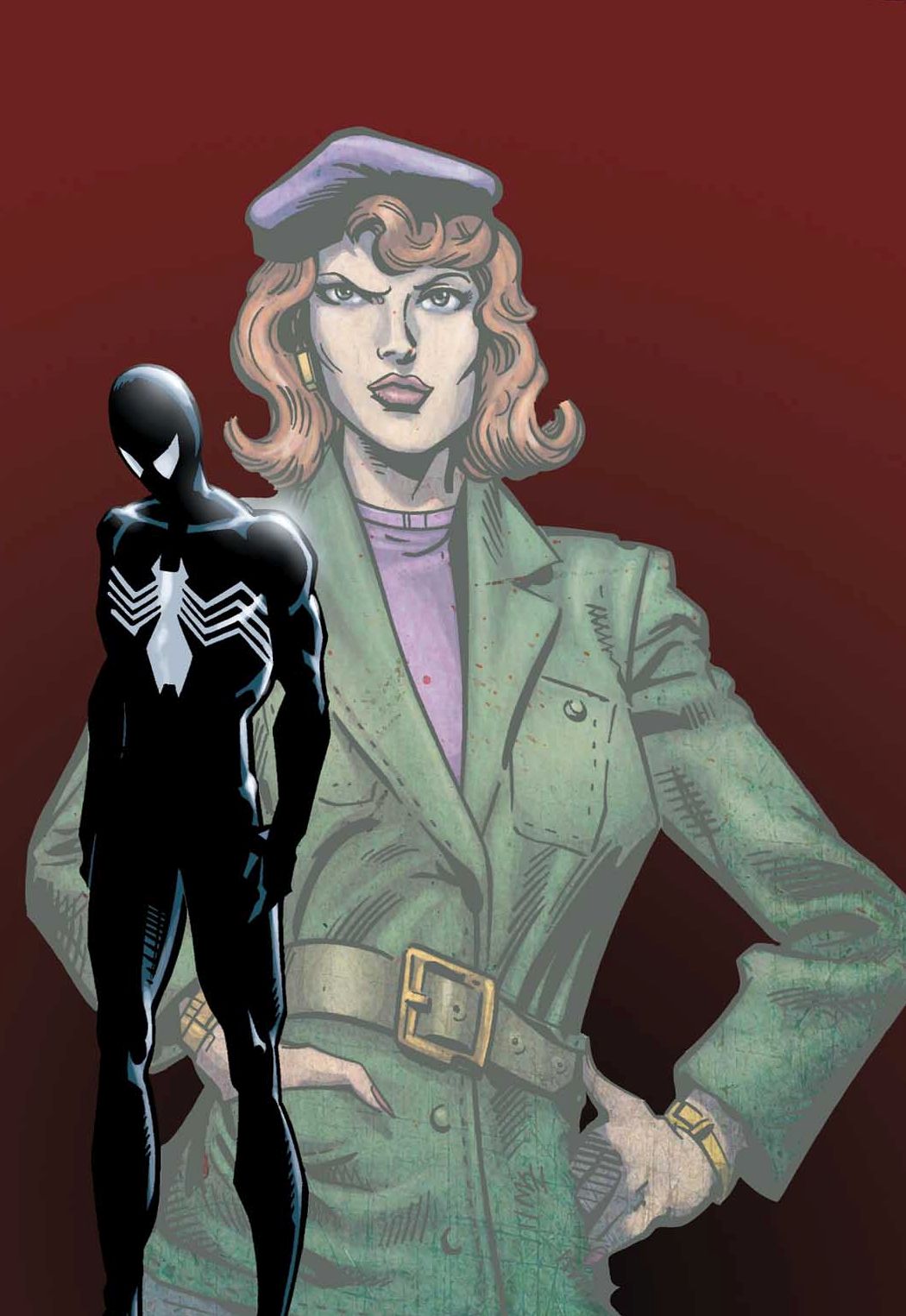
Jean DeWolff was a recurring character in the Spider-Man mythos, first appearing in Bill Mantlo and Sal Buscema’s Marvel Team-Up #48 in 1976. The NYPD detective would frequently collaborate with Spider-Man, functioning as one of the few authority officials who trusted the wall-crawler. She’d inform Spider-Man of any new villains discovered by the cops, including the Black Cat.
However, DeWolff is now better known for the story surrounding her death, which signaled the start of a far darker period for the wall-crawler. This tale still resulted in the development of one of the most iconic Marvel villains of all time, as well as a gripping mystery surrounding the Sin-Eater. In his first appearance, the Sin-Eater used a close-range shotgun blast to kill Jean DeWolff while she was sleeping.
Because Spider-Man isn’t present for the murder and just hears about it in passing, the narrative arc titled “The Death of Jean DeWolff” begins on a sad note due to the savagery of the crime and its suddenness. In order to track out the elusive culprit, Spider-Man links up with Daredevil in a mystery.
This leads to Spiderman going on a hunt to find her killer. We ultimately witness someone posing as the Sin-Eater break into the Daily Bugle, but he is subdued by Peter Parker in disguise. Emil Gregg alleges that voices in his head urged him to go out and kill people, prompting a media frenzy around the killer, culminating in a tell-all interview with another reporter named Eddie Brock.
In a twist, Daredevil, on the other hand, recognizes that Gregg isn’t the same as the killer he and Spider-Man battled earlier. They eventually figure out that the man who killed Jean DeWolff was Stan Carter, the cop who informed Spider-Man of his death at the opening of the story. Emil was Carter’s next-door neighbor, and the “voices” he heard were Carter’s personal recordings.
Spider-Man: Grim Hunt
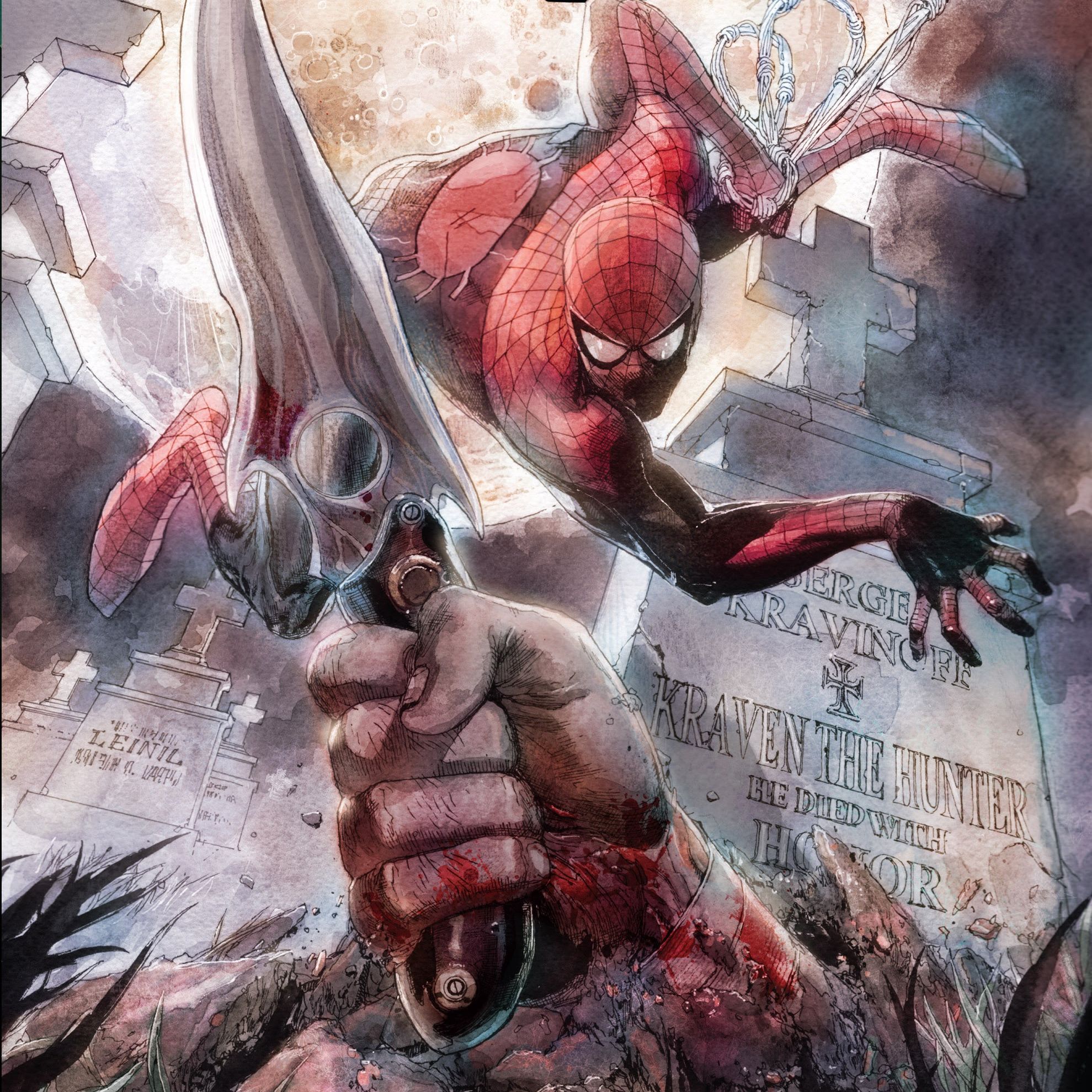
As we have already described earlier, Spider-Man was taken to his darkest hour by Kraven the Hunter. Kraven was driven to the brink when he defeated and buried Spider-Man alive, and he took his own life. In this specific comic issue, Kraven’s children and wife plan to raise Kraven from the grave and begin the Grim Hunt. While preparing to attempt an unholy resurrection, Kraven’s wife and daughter seek down Spider-Man through the urban jungle, weakening him through the Gauntlet. They need his blood for the resurrection and will go to any lengths to get it.
Spider-Man has been pushed to his breaking point by his foes, and he is now ready to hunt in this one.”Grim Hunt” comes after “The Gauntlet” and serves as a sort of sequel to “Kraven’s Last Hunt.”J.M. DeMatteis returns to the Amazing Spider-Man with Max Fiumara to explore an unknown showdown between Kraven and Spidey’s deadly doppelganger Kaine, author of the legendary “Kraven’s Last Hunt.”
Michael Lark’s evocative imagery is unquestionably the most successful component of Grim Hunt. He sets the scenario in the gloom and rain, with individuals half-visible in the shadows, and provides all of the artwork. Joe Kelly’s plot is dark and bleak, and given the explicit depiction of certain horrible situations, it’s debatable whether it’s appropriate for a typical Spider-Man comic.
In addition to the sacrifice scenes, Spider-Man is pinned against a wall by three spears, and blood is splattered everywhere. This is one of the darkest and most violent Spiderman comics that has ever been released.
Amazing Spider-Man’s ‘Shed’
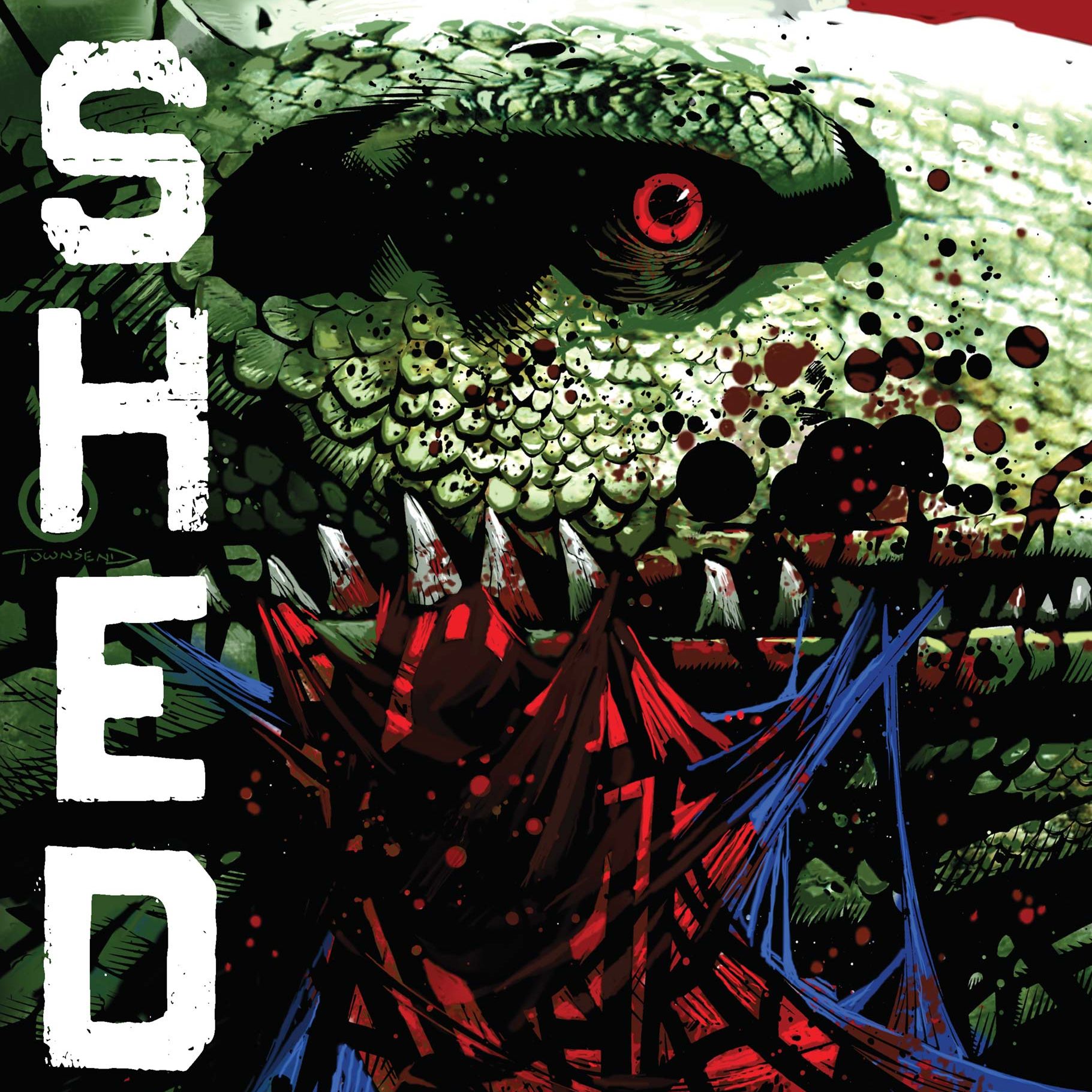
The sacrifice of a character’s child to make the villain seem eviler is the cherry on top of this comic, which features horrific violence, threatened rape, a grim and gritty revamp of an existing villain, and, as a cherry on top, the sacrifice of a character’s child to make the villain seem eviler.
The concept for “Shed” is based on the current “Amazing Spider-Man” arc, in which the Kraven family has abducted mystical fortune-teller Madame Web and is using her to obtain spoilers on Spidey’s impending adventures in order to screw things up royally in new and exciting ways.
This takes place while Connors is starting a new career and fighting his reptile instincts while his new boss continuously trash-talks him and hits on his lovely lab assistant. He becomes territorial, transforms into a snake, and commits heinous crimes.
Before that, we see Connors working, trying to keep it together — attempting to speak with his kid, whom he has repeatedly threatened with death — but failing miserably in virtually every aspect of human interaction because his brain has simply become too reptile. He has continual internal conversations between the human and reptile parts of his brain, and he thinks in terms of territory and treats his ladies like property.
It’s not about the heroes trying to stop murdering, raping mastermind from hitting a girls’ elementary school; it’s about a man’s effort not to self-destruct utterly. But he does it completely. He goes after his son, and this is where the standard “Amazing Spider-Man” narrative momentum would come to an end — Spidey shows up and talks Curt down, he’s moved by his son’s cries, he reverts to normal, and everyone is happy except the poor sons of bitches who’ve already been eviscerated at their workplace for the crime of office fraternization. Set the scene.
The Kraven’s willingly cause havoc, and I suppose they are entirely malevolent — but they appear legitimately menacing here, cryptic rather than noisy, and focused. They throw a wrench in the works with the Lizard and his son, and as a result, Spidey isn’t there when the Lizard catches up with him.
So, rather than having a last-minute epiphany and saving his family, Curt Connors eats his son in half while shrieking at his reptile brain in his own head until he literally eats through it and demolishes his narration boxes as his consciousness completely grinds to a halt, unable to deal with the horror of having to watch himself wolf down his own son. Hands down one of the darkest things to ever be shown in Spiderman comics.
Spider-Man: Reign
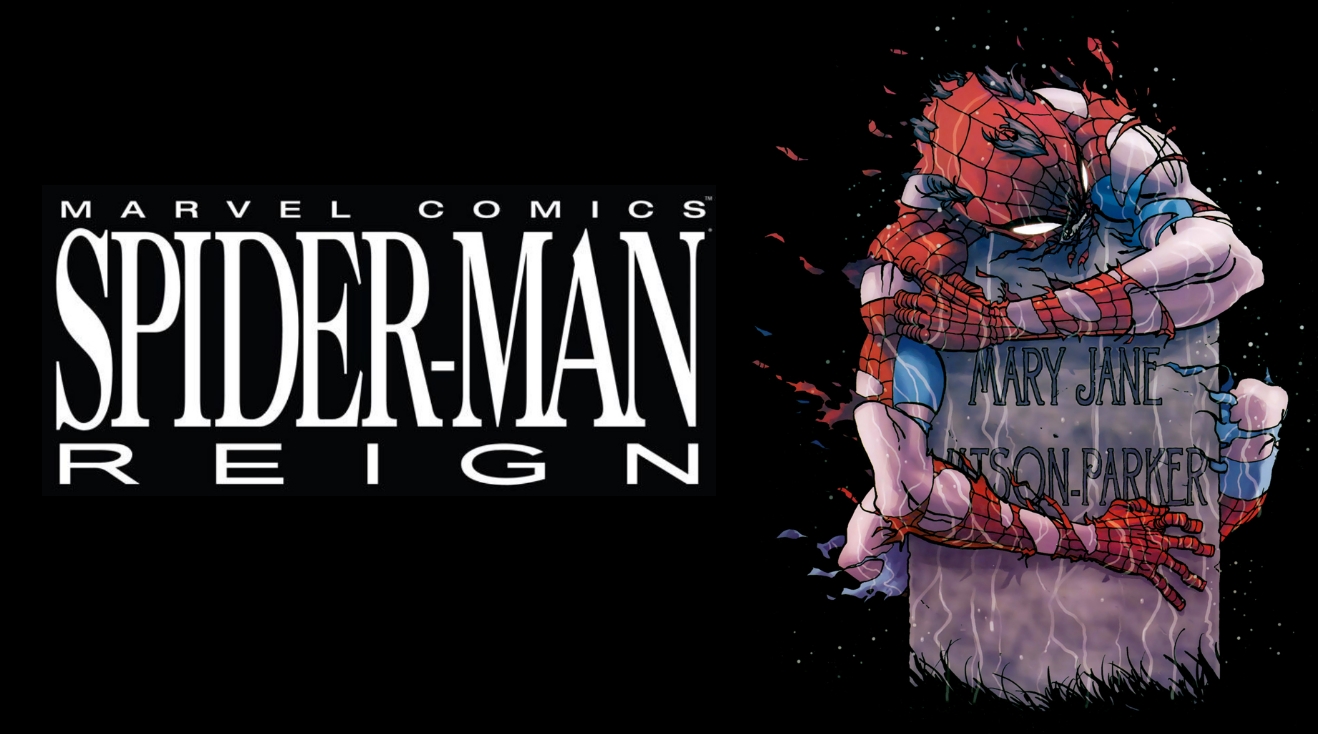
This particular arc takes place thirty years in the future, when New York City has become a safe, albeit authoritarian, the area under Mayor Waters’ entire rule. Superheroes and supervillains are no longer common, with the authoritarian government’s police force, “The Reign,” taking their place. Peter Parker is an old florist who has been dismissed, beaten, and haunted by thoughts of his deceased wife Mary Jane.
Parker receives a parcel containing a camera and his old black-suit mask, which sparks a riot. In his prime, he defeats the officers while wearing only the mask and his underwear. Following the announcement of Spider-Man’s return, an elderly Hypno-Hustler emerges from retirement in the hopes of assisting his former foe but is assassinated by Reign.
As Peter battles with his hallucinations of Mary Jane, who functions as a guide for his actions in the present, his flat is shot at and destroyed with a missile. When the Sinner Six corner him, Kraven tears off his mask, disappointing the crowd as they see their hero as an aged, beaten man. A deceased Doctor Octopus saves his life at the last time by commanding his tentacles to show Peter three burial markers: those of Mary Jane Watson-Parker, May Parker, and Ben Parker.
The surviving members of Sinner Six and Venom are defeated by Spider-Man. After Venom and the Reign are vanquished, Jameson reports that not only have the crime levels returned to pre-Venom levels, but the superheroes have as well. When Peter visits Mary Jane’s tomb, he says that one day he will be with her in peace, but that he has “responsibilities” to attend to until then. One of the saddest story arcs we have read of our beloved Spiderman.
The Amazing Spider-Man #121 [Gwen Stacy’s Death]
![The Amazing Spider-Man #121 [Gwen Stacy's Death]](https://marvelousvideos.com/wp-content/uploads/2022/02/The-Amazing-Spider-Man-121-Gwen-Stacys-Death.jpg)
Gwen Stacy’s death is still one of the most heartbreaking events in Marvel history, whether it was first shown in The Amazing Spider-Man #121 or on-screen with Andrew Garfield and Emma Stone. The Night Gwen Stacy Died is a two-part storyline that begins with Norman Osborn spiraling downwards into parental despair as a result of his son’s persistent drug usage, and then being thrown back into his Green Goblin alter-ego.
He kidnaps Gwen, leads Spidey to the George Washington Bridge, and the two have a fight that ends with the hero’s love interest plummeting to her death. Spider-Man’s last-ditch pursuit of Gwen is still one of the tensest scenes in comic book history, and his ‘I’ve Got To!’ exclamation is one of the most memorable.
Spider-Man’s speech is certainly one of the most desperate of any superhero. To make matters worse, it turns out that his webbing was the cause of Gwen’s death, cracking her neck just as she was about to touch the earth. Obviously, Gwen and Spidey had no way out of the position but adding that extra tiny detail simply adds to the intensity of that one moment.
It was the first time a superhero had failed so miserably to save a loved one when it was first published, and this one tragic moment has become so famous that it has inspired an entire phrase: ‘The Gwen Stacy Syndrome.’ Truly heartbreaking and one of the darkest and saddest moments in all the Spidey comics that have been written.
Spectacular Spider-Man #226 [Hitting A Pregnant Mary Jane]

The Clone Saga of Spider-Man was a mixed bag for fans, and the scene in which Peter Parker screamed and slapped Mary Jane is a prime example of the series’ flaws. Spectacular Spider-Man #226 by Tom DeFalco, Sal Buscema, and Bill Sienkiewicz is about Peter Parker and Ben Reilly’s ongoing battles to see who is the ‘original’ Peter Parker and who is the fake clone. As it turns out, Reilly is the real deal, and Peter is soon faced with a major identity issue.
Mary Jane goes a little too near to Parker in an attempt to console her soulmate, and he lashes back instead. A seething Peter attacks Reilly, believing that a medical test showing his clone status was rigged. With uncontrolled wrath, he attacks Ben and beats him to surrender. Mary Jane tries to stop him, but Peter lashes out and punches her in the face, knocking her backward.
Peter most likely intended to merely shove her away from the fight, but he underestimated his super-strength due to his wrath. The comic page, on the other hand, appears to be a purposeful back-hander, complete with a closed fist, targeted at his pregnant wife. Peter quickly sees his error and flees, leaving MJ beseechingly pleading for him to stay. It’s an interesting turn of events.
However, it’s unclear why they felt the need to add this at all. It’s so out of character for him that it sticks out like a sore thumb. The Clone Saga is one of the most reviled Spider-Man stories ever, and it’s easy to see why, with bizarre, out-of-character scenes like this.
Ultimate Spider-Man #160 [Peter Dies]
![Ultimate Spider-Man #160 [Peter Dies]](https://marvelousvideos.com/wp-content/uploads/2022/02/Ultimate-Spider-Man-160-Peter-Dies.jpg)
In comic books, a hero might die in a variety of ways. This sort of thing happens all of the time: You might die defending your newly human acquaintance from a swarm of deadly space bugs. You could lose your life-fighting Nazis in Washington. You might perish defending your people’s alleged savior from a nasty robot-man. The options are limitless.
Bendis provides Peter Parker with the most heroic of deaths. In a brilliantly penned and illustrated narrative, Peter is shot and has a bridge dumped on him, but he still manages to take down the Sinister Six, seen in the last issue. He’s been tortured, battered, and nearly shattered – but now he’s facing his greatest foe: Norman Osborn, his creator. Despite being outmanned and beaten to a pulp, Peter pulls off a last-ditch save that puts Norman – and himself – out for good.
Peter smiles as he rests on the ground, for the first time since his uncle’s awful death, he has done everything properly. As obvious as Bendis’ fondness for the character is, Bagley’s dissatisfaction with the way he depicts the character through his ultimate victory is equally apparent.
It’s an emotional ride through the imagery as Peter is pummelled left and right before ultimately taking his winning stand, and it’s Bagley’s art that truly brings the emotion home as he lays still on the dirt for one more time. It’s just stunning.
Brian Bendis and Mark Bagley gave Ultimate Spider-Man/Peter Parker the finest death possible, and there are no two ways about it.
Do you know any other dark moments of the friendly neighborhood Spiderman? Let us know in the comments!
